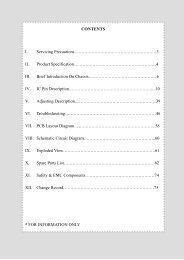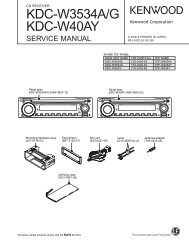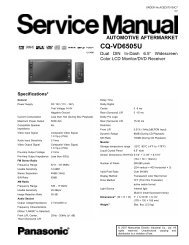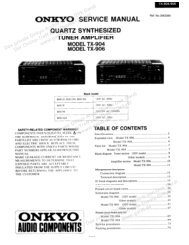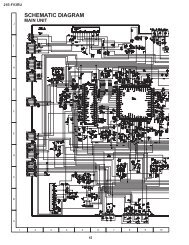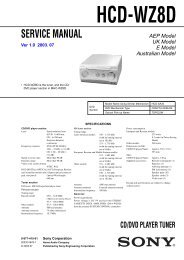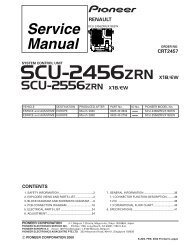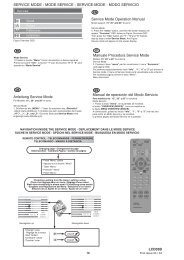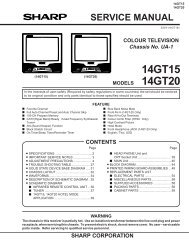Technology of Q 2500 colour TV set
Technology of Q 2500 colour TV set
Technology of Q 2500 colour TV set
Create successful ePaper yourself
Turn your PDF publications into a flip-book with our unique Google optimized e-Paper software.
<strong>Technology</strong> <strong>of</strong> Q <strong>2500</strong> <strong>colour</strong> <strong>TV</strong> <strong>set</strong>rier frequency the less pronounced the Moirébecomes.In order to keep interference with the pictureas low as possible, the phase position <strong>of</strong> the<strong>colour</strong> carrier frequency from line to line isshifted forward by 90°. In this way, bright anddark pixels only overlap after four lines. Atnormal distances the eye cannot detect thisinterference.This compensation is known as "Fourth LineOff<strong>set</strong> Procedure".If one subtracts the two signals from one another,the brightness information is eliminatedand the <strong>colour</strong> information is present at doublethe amplitude on the output <strong>of</strong> the circuit.CVBS(PALsignal)2 Hdelay14122 Hdelay14+-Y+1. ZeileChrominancebandpassC1Y2. Zeile12 3 4 5f1Chroma3. Zeile12 3 MHz 5f4. ZeileThis fourth line <strong>of</strong>f<strong>set</strong> now permits the filteringout <strong>of</strong> <strong>colour</strong> components from brightness information,and the reverse. The phase shiftfrom line to line causes a counter phasing <strong>of</strong>the <strong>colour</strong> carrier every two lines.If a two-line delay line is inserted into the circuitand the direct and delayed signals areadded together, the <strong>colour</strong> information is removedand the brightness information is presenton the output at double the amplitude.Theoretically this circuit supplies error freeresults. A condition for this, however, is thephase and amplitude equality <strong>of</strong> the chromasignal over 3 lines, which is only the case forthe same and equally saturated <strong>colour</strong>s. Inpractical terms picture joining can occur, inwhich cross <strong>colour</strong> and cross luminance interferencecannot be removed by the comb filter.Therefore, another circuit is integrated, inwhich three lines in sequence, from the point<strong>of</strong> view <strong>of</strong> both phase and amplitude, arecompared.If a deviation is detected that goes beyond aspecific difference, the comb filter function isautomatically switched <strong>of</strong>f and the separation<strong>of</strong> the two components is implemented traditionallywith chroma trap and band pass.Document Q <strong>2500</strong> 88 © Loewe ProCollege



